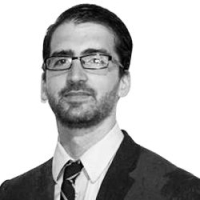Roughly 10,000 people marched down Pennsylvania Avenue in Washington D.C. Saturday to protest police brutality and recent grand jury decisions not to indict police officers in the deaths of Michael Brown and Eric Garner.
Chanting “No Justice, No Peace” and “I Can’t Breathe,” demonstrators first gathered in the Freedom Plaza near the White House before marching ten blocks down “America’s Main Street” to gather before an array of speakers just blocks from the U.S. Capitol.
The protesters were a diverse mix. There were little blond girls in knit hats next to elderly African American women hobbling on canes. Those marching held signs emblazoned with slogans like “Black Lives Matter” or simply the names of their union or local Democratic Party. There were families, church groups, and college kids, all marching in clusters. One African American woman brandished a pocket-sized copy of the Constitution while marching.
ADVERTISEMENT
GALLERY: 'JUSTICE FOR ALL' MARCH IN WASHINGTON DC

There were plenty of representatives of the fringe too. The Five Percent Nation of Islam was there as well as fringe Stalinist groups. In Freedom Plaza, a Trotskyite sold copies of The Militant cheek by jowl with a bow-tied Nation of Islam member who was selling The Final Call and complaining that he should have brought some bean pies to sell as well. One of the speakers at the main rally, Toni Sanders, railed against “the system” and called for “fists up, fight back” to replace “hands up, don’t shoot” as a slogan.
But the radicals and extremists were vastly outnumbered by people motivated by a basic sense of outrage. There was a sense of frustration that six years after an African American was elected president and a decade and a half into the 21st century, the status quo seemed to have barely budged. They still saw white policemen killing unarmed African Americans in what they perceive as cold blood and without repercussions.
The speakers emphasized the diversity of the crowd and seemed to almost play defense over any perceived media attacks. Rev. Al Sharpton, one of the march's organizers, took preemptive jabs at the media which he claimed would not report the true size of the crowd or sights like a young white girl holding a sign saying “black lives matter.” Sharpton, well known for a series of controversial incidents earlier in his career, also played defense about his own resume. The MSNBC host noted that unlike other civil right leaders, he “came up the rough side of the mountain” and may have splattered “a little mud” on himself in the process. But he also reminded the younger members of the crowd of the civil rights movement of the last century.
“We are here today because we must have this nation deal with the fact that, just like 50 years ago, the state has taken the position to rob civil and human rights,” he said, according to The New York Times. “You can castigate the leaders; you can try and divide us by generation,” he said. “You may bury us, but you didn’t know you were burying seeds. We’ll grow stronger and last longer.”
The piece de resistance of the event was the makeshift outdoor stage filled with the families of various unarmed African Americans killed by police. They cycled through, each taking a few moments to share their support or to lead the crowd in brief chants of "hands up, don't shoot" or "I can't breathe."
Fred Drayton, an older African American man from Washington, described the recent anxiety he felt when his 44-year-old son was pulled over by the police in Georgia. Drayton had been talking to his son on the phone when a police car turned on its siren and signaled for him to go to side of the road. He said his son was confused why he was being pulled over—other cars had been speeding by him—before hanging up the phone. Drayton then spent the next 10 minutes consumed with dread and anxiety that something terrible might happen until the traffic stop was over and his son called him back.
That dread seemed to motivate marchers more than any of the suggested reforms, which included body cameras for police, a push for a separate division in the Department of Justice for police brutality and mandating that special prosecutors take the lead in police involved shootings. But these were technical solutions and unlikely to inspire protests alone. Furthermore, despite the symbolism of marching in the shadow of the U.S Capitol, the march happened as the U.S. Senate was consumed in procedural minutia in an effort simply to pass a budget. If Congress struggles to keep the lights on, how could it deal with issues as complex as police brutality?
In the meantime, thousands stood out in the cold to, at the very least, “show their solidarity and make their voice heard” as one marcher named Colin from Brooklyn put it. This wasn’t a lot, not enough to end police abuses, nor could it resurrect Michael Brown, Eric Garner, Tamir Rice and all the other names brandished by marchers. But it was something and far more substantial than anything expected from Capitol Hill, where the Senate voted, seemingly ad infinitum, on motions to proceed to executive session.






